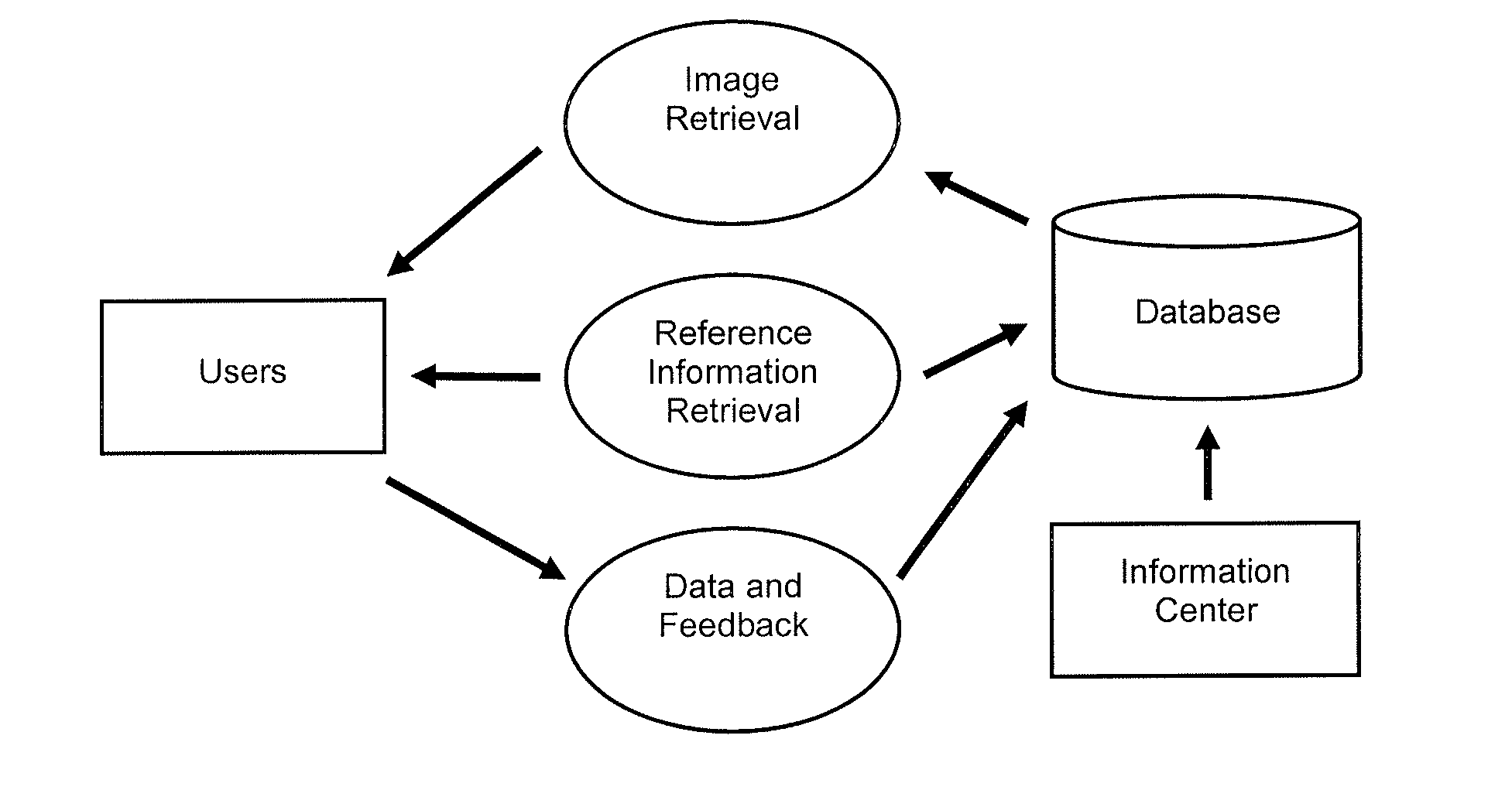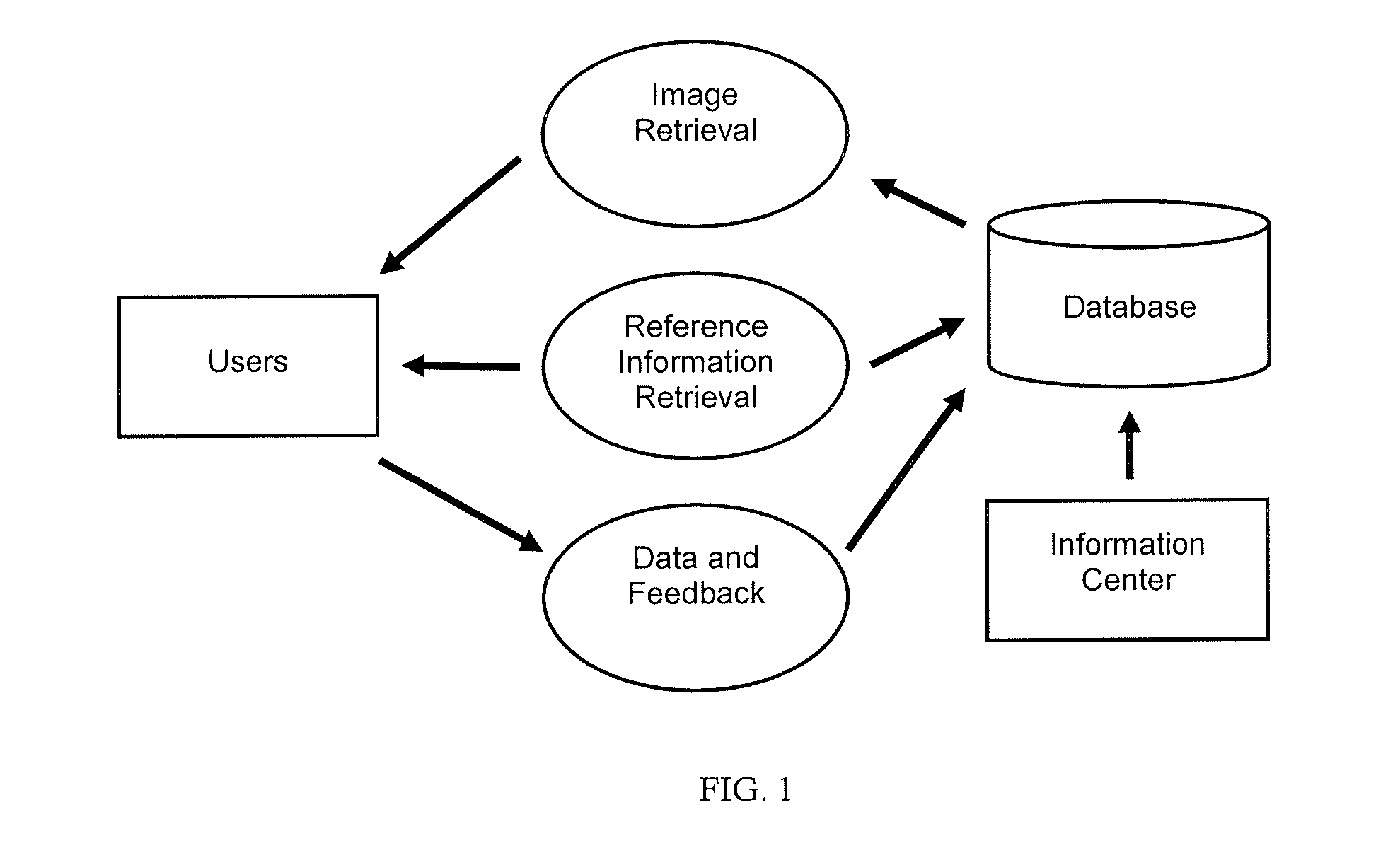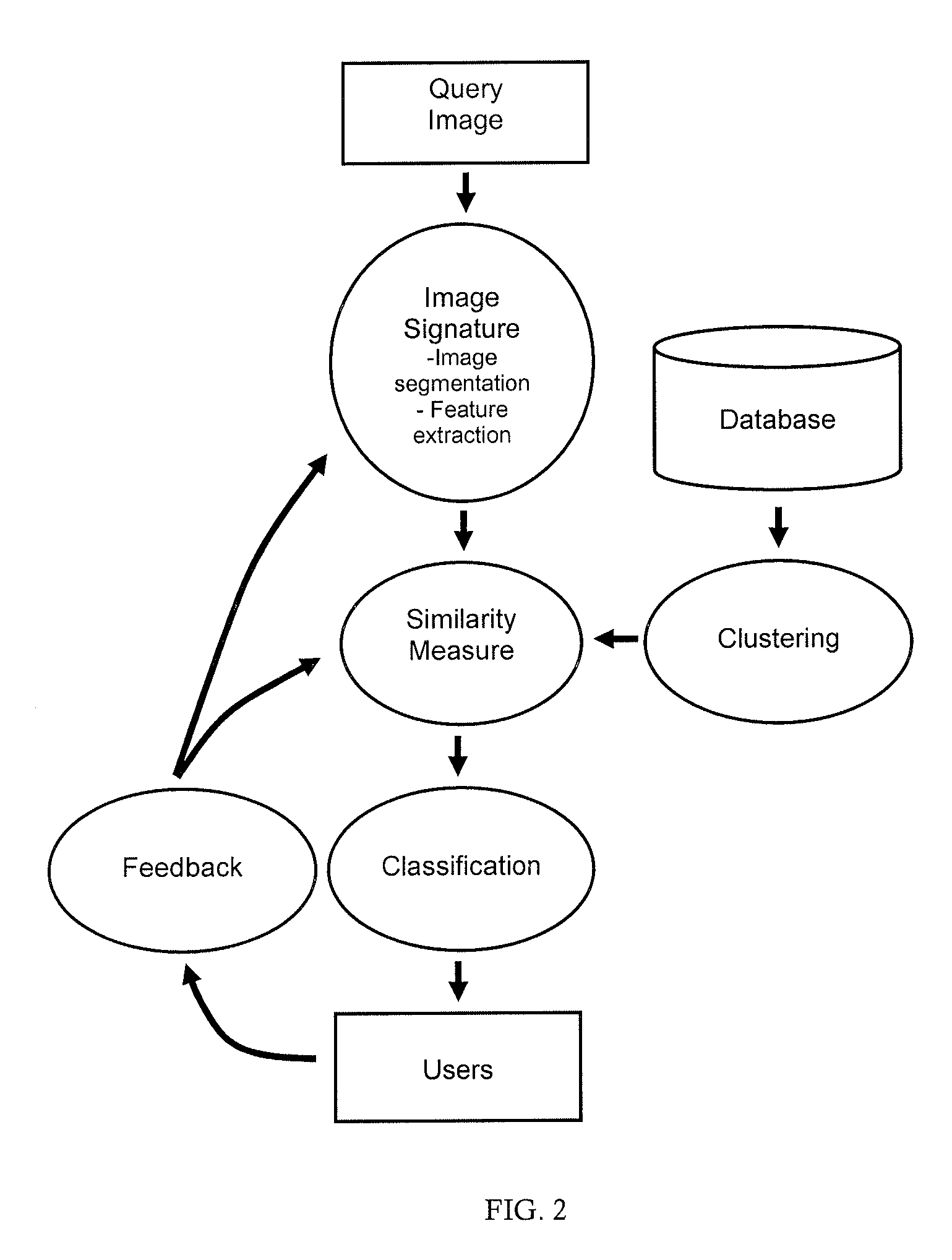Diagnosis Support System Providing Guidance to a User by Automated Retrieval of Similar Cancer Images with User Feedback
a technology of user feedback and diagnostic support, applied in the field of medical imaging, can solve the problems of increasing the incidence of cancer precursors, unclear whether this success can be replicated, and the disease remains a serious threat to women's health, so as to improve patient treatment, improve diagnostic power, and improve accuracy.
- Summary
- Abstract
- Description
- Claims
- Application Information
AI Technical Summary
Benefits of technology
Problems solved by technology
Method used
Image
Examples
Embodiment Construction
[0036]The present invention of a cervical cancer image retrieval and user feedback system, described herein and more fully below, is a global information sharing and clinical reference diagnosis support system providing cost-effective, time-effective and objective screening, detection, and diagnosis support for cervical pre-cancer and cancer.
[0037]A conceptual diagram of the diagnosis support system of the present invention is shown in FIG. 1. The diagnosis support system is an automated database of cervical digital imagery with associated meta-data in terms of patient biographical information, treatment history, hospital and physician information, screening, detection, and diagnosis results, colposcopy impression and annotations, histopathology diagnosis and annotations, and advanced analysis and feedback tools. The diagnosis support system incorporates the important functionalities of reference information and image retrieval. The diagnosis support system also stores and transmits...
PUM
 Login to View More
Login to View More Abstract
Description
Claims
Application Information
 Login to View More
Login to View More - R&D
- Intellectual Property
- Life Sciences
- Materials
- Tech Scout
- Unparalleled Data Quality
- Higher Quality Content
- 60% Fewer Hallucinations
Browse by: Latest US Patents, China's latest patents, Technical Efficacy Thesaurus, Application Domain, Technology Topic, Popular Technical Reports.
© 2025 PatSnap. All rights reserved.Legal|Privacy policy|Modern Slavery Act Transparency Statement|Sitemap|About US| Contact US: help@patsnap.com



